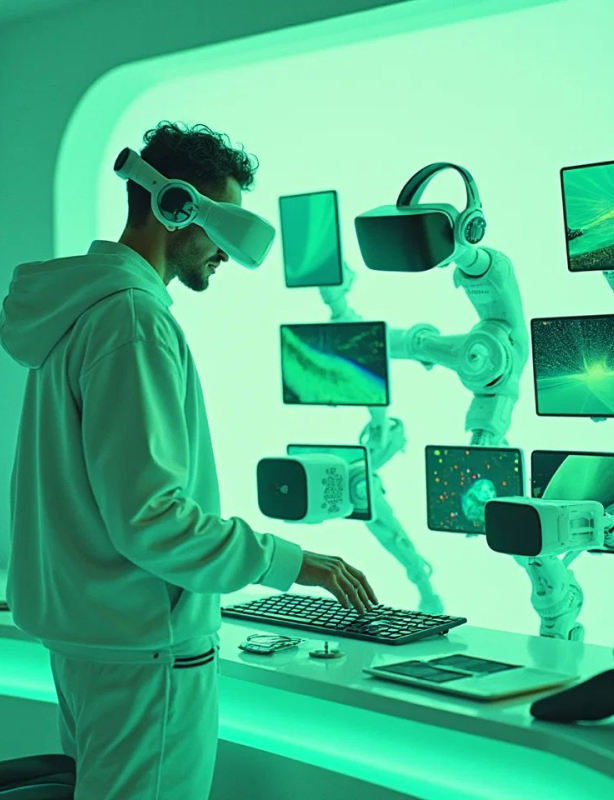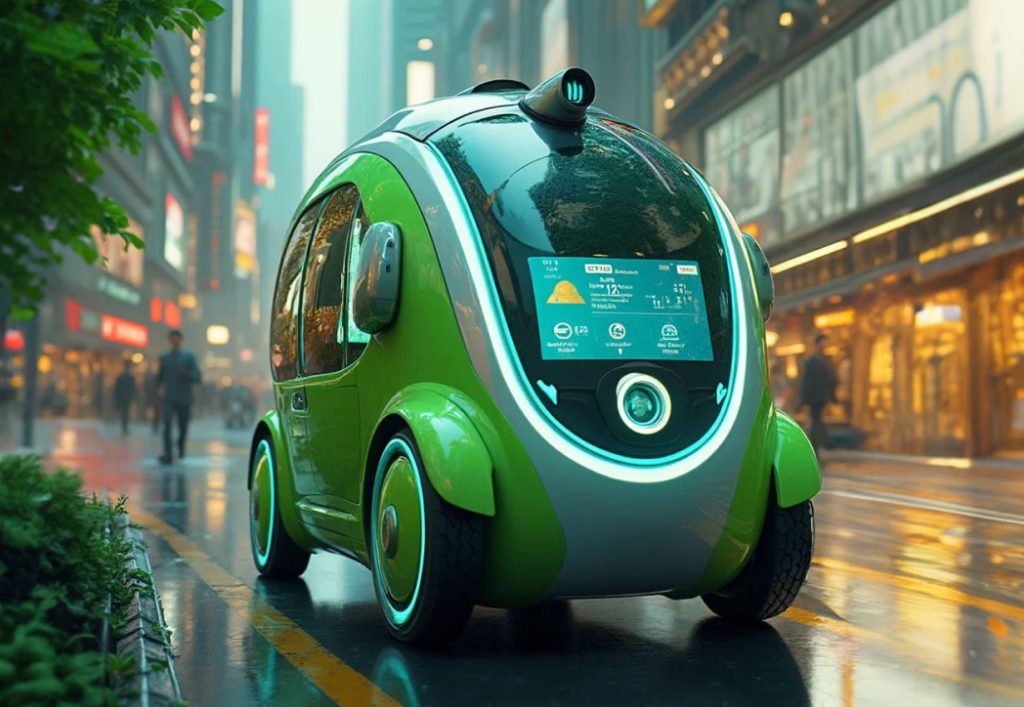
As we look towards 2025, the technological landscape is on the brink of transformative advancements that will fundamentally reshape our world.
While flashy predictions often steal the spotlight and can distract us from what’s truly unfolding, we aim to clarify the path ahead. This report delves into the pivotal trends that will redefine our interactions with technology and each other.
While flashy predictions often steal the spotlight and can distract us from what’s truly unfolding, we aim to clarify the path ahead. This report delves into the pivotal trends that will redefine our interactions with technology and each other.
Get ready for a tech revolution!
Quantum computing and quantum networks are about to change everything we know about data and digital innovation.
Startups (40%) and universities (33%), along with tech giants such as IBM and Microsoft, are pushing the boundaries of what's possible.
The global quantum computing market is set to explode from $412 million in 2020 to an incredible $8.6 billion by 2027.
Startups (40%) and universities (33%), along with tech giants such as IBM and Microsoft, are pushing the boundaries of what's possible.
The global quantum computing market is set to explode from $412 million in 2020 to an incredible $8.6 billion by 2027.
Pioneering advancements: What’s new in quantum?
Companies like IBM and Google are pushing quantum tech forward. Innovations like IBM’s Qiskit and Google’s error-corrected qubits make quantum computing more practical and efficient. These breakthroughs are laying the foundation for the future of digital transformation.

Qubits & algorithms: The AI dream team
Quantum computing is more than just speed—it's a whole new way of thinking that supercharges AI. With game-changing algorithms like Grover’s for faster data searches and Quantum Fourier Transform (QFT) for smarter data analysis, quantum computing is pushing AI to new heights.
The Rise of Agentic AI Systems
They represent a significant advancement in artificial intelligence by embodying the concept of "agency"—the ability and grade to act independently and exert control over actions and processes. Unlike traditional standalone systems, which often require continuous human intervention.
By 2028, one-third of interactions with generative AI will involve action models and Agentic AI Systems.
AI is set to grow 27% year-over-year, from $166 billion in 2023 to a staggering $423 billion by 2027.
Key Differences Between Other Solutions and Agentic AI Systems
Requirements Gathering and Analysis:
Design:
Implementation:
Testing:
Deployment and Maintenance:
Redefining Engineering & More
What generative AI has really unlocked is the understanding that so much of engineering impact lies outside of coding. We are on the cusp of a new era—one that will redefine the boundaries of what’s possible in software development and problem-solving more generally.
– Carolina Dolan, Chief Digital Officer

Roomba and Alexa are making our lives easier, helping us not only with repetitive tasks but with making increasingly autonomous decisions. We’re entering an era of democratization of robots, powered by digitization and GenAI.
In the following years, we will see a lot more robots in controlled sectors–such as healthcare–and expensive and difficult sectors–such as manufacturing and construction–.
Currently:
Over $4.2 billion has been raised by robotics startups in seed funding in 2024, advancing to the growth stage.
By 2026, more than 30% of intelligent robots will reach level 3 intelligence (a high degree of autonomy and cognitive capability, enabling independent decision-making in complex and variable environments), up from less than 2% in 2022, according to Emerging Technologies AI Roadmap for Smart Robots - Journey to a Super Intelligent Humanoid Robot, by Gartner.
In 2024 Globant's Tech Trends, we noted that robots took on the role of service (robots-as-a-service), automating tasks. With advancements like Retrieval-Augmented Generation (RAG) enhancing AI in LLMs, robots will not only continue to perform these actions but will augment human capabilities.
AI isn’t just an underlying technology in Robotics but the engine that is boosting its existence

Human senses are being digitally and artificially enhanced so that robots can replicate them. By 2025, this ability will be transferred to industrial or small-industry robots in pursuit of cost savings.
By 2030, 80% of humans will engage with smart robots on a daily basis.
By 2030, 80% of humans will engage with smart robots on a daily basis.
Synthetic humans are AI-driven digital entities that don’t just mimic human traits but challenge our understanding of being human. As their development accelerates, the question emerges:
How are they changing our reality, and how will they shape our future?
"Synthetic humans will be your digital friends in the digital ecosystem. A friend you would want to talk to again and again, who understands you, doesn't judge, with whom you don't get bored, and whom you can confide in.”
– Jaydeep Sheth, Subject Matter Expert at Globant
The Digital Human market, AI Avatars, is foreseen to grow from USD 5.59 billion by 2023 to USD 67.54 billion by 2032 at a CAGR of 31.9%.
"Synthetic humans will be your digital friends in the digital ecosystem. A friend you would want to talk to again and again, who understands you, doesn't judge, with whom you don't get bored, and whom you can confide in.”
– Jaydeep Sheth, Subject Matter Expert at Globant
The Digital Human market, AI Avatars, is foreseen to grow from USD 5.59 billion by 2023 to USD 67.54 billion by 2032 at a CAGR of 31.9%.
Synthetic humans are expanding a new frontier in the depth of human communication, recognizing that beyond our words lies the complexity of context and emotions. Remarkably, trust, once reserved for human relationships, is now extending to machines—a significant shift in the nature of connection itself, where the bond between humans and machines will undoubtedly lead us to unseen possibilities.

Invisible Experiences
Gone are the days when smart glasses were mere fragments of our imagination; they have now transformed into a tangible innovation that captivates the minds of both visionaries and everyday consumers. The perks, from boosting workplace productivity and creating new business opportunities to gaining a competitive edge, make a super strong case for jumping on the bandwagon.
Hold onto your seats because smart glasses are about to blow your mind!
Forget clunky, immersive experiences and obvious tech - we're talking about glasses that look stylish while packing more computing power than early space shuttles.
The rush to invest In Smart Glasses is a strategic move to shape the future of digital interaction. Companies that get in early and invest in smart glasses can position themselves as market leaders.
The future of immersive experiences, invisible computing, and AI isn't about turning us into superheroes overnight. It's about gradually enhancing our natural abilities, making technology so intuitive and integrated that it feels like an extension of ourselves.